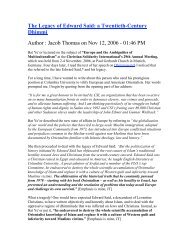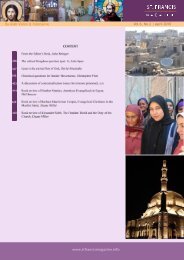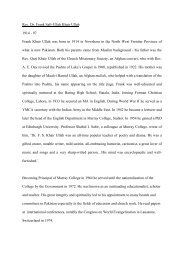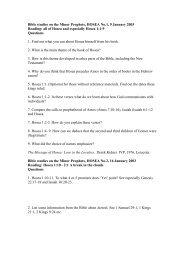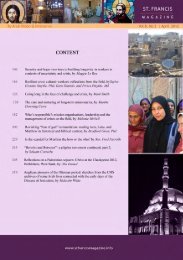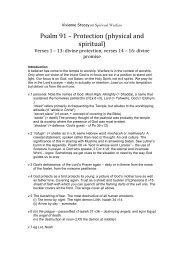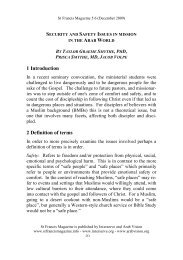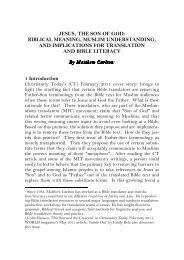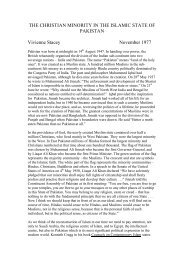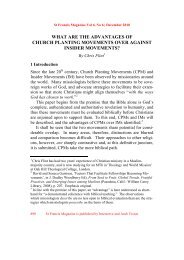download the pdf - St.Francis Magazine
download the pdf - St.Francis Magazine
download the pdf - St.Francis Magazine
You also want an ePaper? Increase the reach of your titles
YUMPU automatically turns print PDFs into web optimized ePapers that Google loves.
<strong>St</strong> <strong>Francis</strong> <strong>Magazine</strong> Vol 8, No 4 | August 2012<br />
“I believe in One God, <strong>the</strong> Fa<strong>the</strong>r, Almighty, Jesus Christ our Lord.”<br />
There is also a Roman baptismal formula that dates back to 125-135<br />
AD: “I believe in God, Almighty, (<strong>the</strong> Fa<strong>the</strong>r), and in Jesus Christ<br />
His only Son, who dominates us, born of <strong>the</strong> Holy Spirit and Virgin<br />
Mary, who is crucified in <strong>the</strong> time of Pilate of Pontus and buried and<br />
raised in <strong>the</strong> third day.”<br />
This Orthodox faith is supported by <strong>the</strong> testimony of history and<br />
<strong>the</strong>ology. It is supported also by <strong>the</strong> geographical spread of <strong>the</strong><br />
faith, especially in <strong>the</strong> first centuries of Christianity, when <strong>the</strong><br />
church was strongly oppressed.<br />
In conclusion, <strong>the</strong>se ante-Nicene, Patristic texts demonstrate<br />
that <strong>the</strong> confession of <strong>the</strong> faith of Nicaea did not promulgate any<br />
new teaching. The concepts and vocabulary used <strong>the</strong>re were already<br />
in wide circulation among <strong>the</strong> teachers and elders of <strong>the</strong><br />
churches throughout Asia, Africa, and Europe.<br />
4 The <strong>St</strong>ory Of Nicaea: What Really Happened There<br />
Let us examine <strong>the</strong> historical facts. The beginning of <strong>the</strong> controversy<br />
was when Arius (a cleric in Alexandria) offered his heretical ideas.<br />
This was during <strong>the</strong> divine war. Constantine saw that this Arian<br />
controversy was dividing <strong>the</strong> bishops of his empire, so in 323 AD he<br />
appointed Hosius of Cordova (Spain) to assist in resolving this conflict.<br />
Hosius delivered a letter from <strong>the</strong> Emperor, though it might<br />
have been written by Hosius himself, to Alexander bishop of Alexandria<br />
and to Arius, but <strong>the</strong> letter had no effect.<br />
So by an invitation from <strong>the</strong> emperor himself, a council was held<br />
in 325 AD in <strong>the</strong> town of Nicaea, in Bithynia, which was a vital city<br />
near Nicomedia. The council consisted of 318 bishops (we get this<br />
figure from Athanasius’ writings. Some o<strong>the</strong>r sources claim that <strong>the</strong><br />
number was 300 or 270). In addition, <strong>the</strong>re was a great number of<br />
priests (presbyters), deacons, and assistants present, most of <strong>the</strong>m<br />
from <strong>the</strong> East, to settle <strong>the</strong> Arian debate and fix <strong>the</strong> Passover date.<br />
Ano<strong>the</strong>r concern was to discuss <strong>the</strong> subject of re-baptizing heretics.<br />
There are evidences that <strong>the</strong> title “pope” or “patriarch” did not<br />
exist in <strong>the</strong> ante-Nicene era, or even in Nicene time. We have primary<br />
materials from <strong>the</strong> Council of Nicaea, like a letter from Euse-<br />
<strong>St</strong> <strong>Francis</strong> <strong>Magazine</strong> is a publication of Interserve and Arab Vision 448


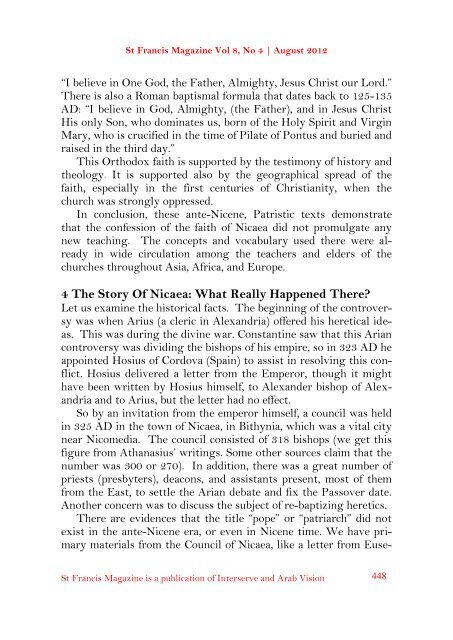

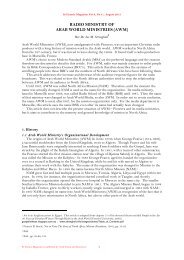
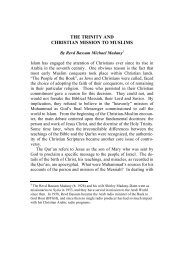
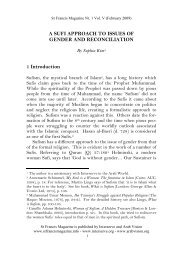
![Reflections on Surah Fatiha and the Lord's Prayer[1] - St.Francis ...](https://img.yumpu.com/49377951/1/184x260/reflections-on-surah-fatiha-and-the-lords-prayer1-stfrancis-.jpg?quality=85)
